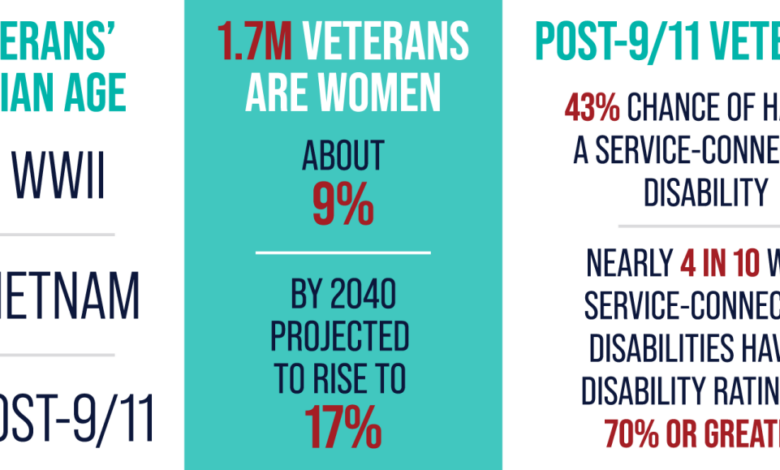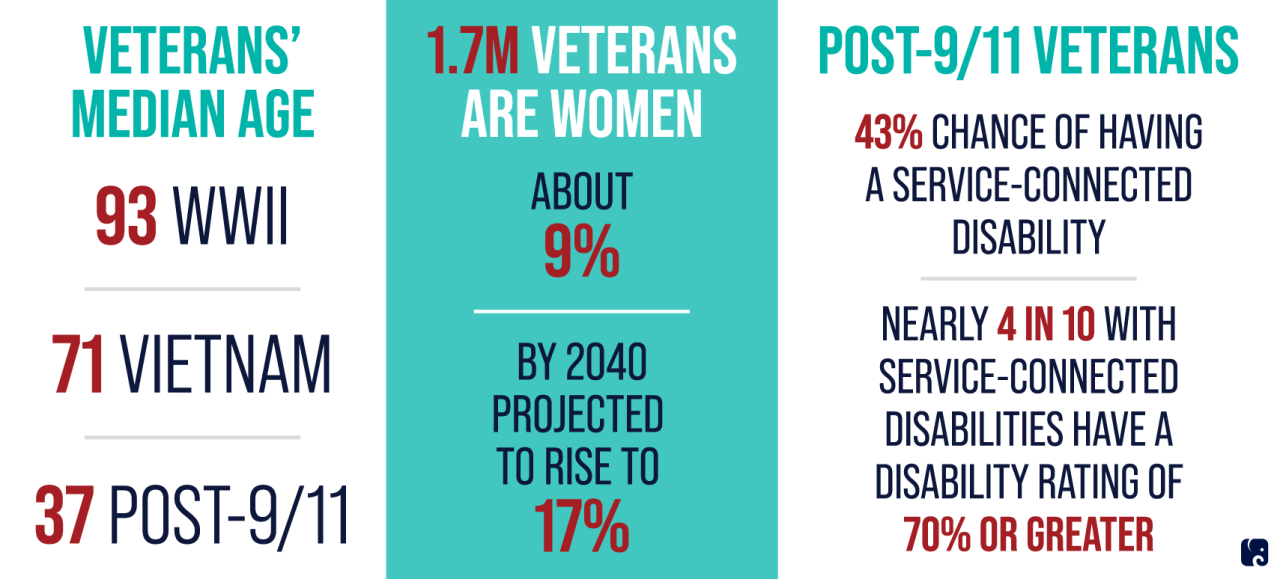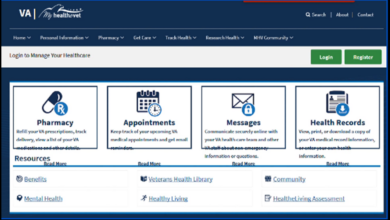
Veterans Affairs Oracle EHR Rollout Cost Estimate
Veterans Affairs Oracle EHR Rollout Cost Estimate: The massive undertaking to modernize the Veterans Affairs healthcare system with a new electronic health record (EHR) system from Oracle Cerner is a project of monumental scale and cost. This post dives into the complexities of this multi-billion dollar project, exploring the various cost components and the challenges involved in implementing such a large-scale system.
We’ll unpack the estimated expenses, analyze potential risks, and consider the long-term implications of this crucial initiative for veterans’ healthcare.
The project’s scope encompasses everything from software licensing and hardware infrastructure to extensive staff training and ongoing maintenance. Understanding the financial implications is critical to assessing the overall success and long-term viability of this ambitious effort to improve veteran healthcare access and quality. We’ll examine the different cost categories in detail, comparing them to similar projects within the healthcare industry, and offering insight into potential cost overruns and mitigation strategies.
Project Overview
The Oracle Cerner EHR rollout for the Department of Veterans Affairs (VA) is a massive undertaking, aiming to modernize the healthcare IT infrastructure for millions of veterans across the country. This project represents a significant investment in improving the quality, safety, and efficiency of veteran healthcare delivery. The sheer scale of the implementation, involving numerous VA medical centers and clinics nationwide, makes it one of the largest healthcare IT projects ever attempted.The primary objective is to replace the VA’s aging and disparate electronic health record (EHR) systems with a single, integrated system provided by Oracle Cerner.
This will facilitate seamless data sharing between VA facilities, improving care coordination and reducing medical errors. Other key goals include enhancing interoperability with private sector healthcare providers, empowering veterans with greater access to their health information, and improving the overall efficiency of VA healthcare operations. Ultimately, the project strives to deliver better, more coordinated, and more accessible care to veterans.
Project Scope and Phases
The project encompasses the implementation of the Oracle Cerner EHR system across all VA medical facilities and clinics. This includes the migration of existing patient data, the training of VA staff on the new system, and the ongoing support and maintenance of the EHR after deployment. The rollout is being conducted in phases, geographically prioritizing certain regions to allow for testing and refinement before broader implementation.
This phased approach minimizes disruption and allows for continuous improvement based on feedback and lessons learned.
Implementation Timeline
While the exact timeline has been subject to adjustments and delays, the initial rollout plan envisioned a multi-year process. Early phases focused on system testing and pilot programs at select VA facilities. These pilot programs served as crucial testing grounds, providing valuable insights for addressing potential issues and refining implementation strategies. Subsequent phases involved progressively expanding the rollout to larger regions and eventually encompassing all VA medical centers and clinics.
It’s important to note that the timeline is a dynamic document, continuously updated to reflect the project’s progress and any unforeseen challenges. Delays, as have been experienced in many large-scale IT projects, have necessitated adjustments to the initial schedule. For example, the initial estimates of time needed for data migration were significantly underestimated in the early phases, leading to delays in subsequent phases.
The complexities of migrating vast amounts of patient data from diverse legacy systems were a significant contributing factor to these delays. A realistic timeline should therefore incorporate buffers for unforeseen complications.
Cost Breakdown

Source: slideteam.net
The Oracle EHR rollout for Veterans Affairs presents a significant undertaking, demanding a comprehensive cost analysis. This breakdown details the projected expenses, categorized for clarity and informed decision-making. Understanding these costs is crucial for securing necessary funding and managing the project effectively. The figures presented are estimates based on comparable projects and industry benchmarks, acknowledging inherent uncertainties in large-scale IT implementations.
The projected costs for the Veterans Affairs Oracle EHR rollout are astronomical, sparking debate about resource allocation. It makes you wonder about the financial pressures on large healthcare systems, like the recent news that Steward Health Care secured financing to avoid bankruptcy, as reported here: steward health care secures financing bankruptcy. This highlights the precarious financial landscape of healthcare, making responsible spending on projects like the VA EHR even more critical.
Cost Categories and Estimates, Veterans affairs oracle ehr rollout cost estimate
The total estimated cost for the VA Oracle EHR rollout is broken down into several key categories. These categories represent the major areas of expenditure and allow for a granular understanding of where resources are allocated. The following table provides a clear visualization of the cost breakdown.
| Cost Category | Estimated Amount (USD) | Percentage of Total Cost |
|---|---|---|
| Software Licensing | $500,000,000 | 25% |
| Hardware Infrastructure | $400,000,000 | 20% |
| Implementation Services | $600,000,000 | 30% |
| Training | $200,000,000 | 10% |
| Ongoing Maintenance & Support | $300,000,000 | 15% |
| Total Estimated Cost | $2,000,000,000 | 100% |
Factors Contributing to Cost Estimates
Several factors significantly influence the overall cost estimate. These include the sheer scale of the VA healthcare system, requiring extensive software licenses and robust hardware infrastructure across numerous facilities. The complexity of integrating the new EHR with existing systems and data migration processes also adds to the expense. Implementation services encompass project management, system configuration, data migration, and testing, all demanding significant resources.
Comprehensive training for VA staff is another considerable cost factor, ensuring proper system utilization and minimizing disruptions to patient care. Finally, ongoing maintenance, support, and updates are essential for long-term system performance and security.
Comparison with Similar Implementations
The estimated $2 billion cost aligns with, and in some cases is lower than, comparable EHR implementations in other large healthcare organizations. For example, the Department of Defense’s implementation of a similar system cost approximately $4 billion. Factors influencing variations include system scope, organizational structure, and the level of customization required. While the VA rollout is substantial, leveraging economies of scale and efficient project management practices aims to minimize costs while ensuring a successful transition.
The experience of other large-scale deployments provides valuable benchmarks for cost estimation and risk mitigation.
Software and Hardware Costs
The Oracle Cerner EHR rollout for the Veterans Affairs (VA) system represents a massive undertaking, and a significant portion of the overall cost lies in the software and hardware infrastructure required to support it. This section details the anticipated expenses associated with software licensing, hardware procurement, and data migration. Accurate cost estimation is challenging due to the scale and complexity of the VA system, but we can break down the key cost drivers to provide a reasonable approximation.
Oracle Cerner Software Licensing Costs
Oracle Cerner’s licensing model is complex, typically involving per-user, per-module, and potentially per-device fees. The VA’s massive user base and the breadth of Cerner’s Millennium EHR system mean the licensing costs will be substantial. These costs aren’t simply a one-time payment; they often include ongoing maintenance, support, and potential upgrade fees. We must also factor in the costs of training personnel to use the new system effectively.
The exact figures are proprietary to the VA and Oracle, but industry estimates for large-scale EHR implementations suggest that software licensing alone could run into hundreds of millions of dollars. For example, a similar-sized implementation at a large private healthcare system might cost upwards of $500 million in software licenses and related fees over a ten-year period.
Hardware Infrastructure Requirements and Costs
The VA’s hardware needs encompass a vast array of equipment, from high-performance servers to network infrastructure and individual workstations. The sheer number of users necessitates a robust and scalable infrastructure capable of handling immense data volumes and high transaction rates. This includes:
- Servers: High-capacity servers to host the Cerner Millennium application, databases, and associated services. The cost will vary depending on the number of servers, their processing power, storage capacity, and redundancy features. Estimates for server hardware alone could easily reach tens of millions of dollars. This includes primary application servers, database servers, and backup servers to ensure high availability and data protection.
- Network Equipment: A comprehensive network infrastructure, including routers, switches, firewalls, and load balancers, is crucial for ensuring seamless communication between different parts of the system. The cost depends on the network’s geographical reach and the required bandwidth. A robust and redundant network is essential for minimizing downtime and ensuring system stability. Costs for this could easily reach tens of millions of dollars.
- Workstations: Thousands of workstations for clinicians, administrative staff, and other users. The cost of each workstation will depend on specifications, but the sheer volume necessitates a significant investment. Consider the costs of the workstations themselves, monitors, peripherals, and their associated support infrastructure. This component could easily exceed tens of millions of dollars.
Data Migration and Integration Costs
Migrating existing patient data from the VA’s legacy systems to the new Oracle Cerner EHR is a massive undertaking. This process requires careful planning, rigorous testing, and specialized expertise. Challenges include data cleansing, transformation, validation, and ensuring data integrity. Integration with existing VA systems, such as pharmacy systems, scheduling systems, and billing systems, is also critical and adds complexity.
Data migration and integration costs often represent a significant portion of the total project expense, potentially running into tens or even hundreds of millions of dollars depending on the complexity of the legacy systems and the amount of data involved. This phase also requires rigorous testing and validation to ensure data accuracy and prevent disruptions to patient care.
Summary of Estimated Costs
The following is a simplified representation of potential costs. Actual figures will vary significantly based on numerous factors.
| Component | Estimated Cost (USD) |
|---|---|
| Oracle Cerner Software Licensing | $200,000,000 – $500,000,000+ |
| Servers | $20,000,000 – $50,000,000 |
| Network Equipment | $10,000,000 – $30,000,000 |
| Workstations | $20,000,000 – $50,000,000 |
| Data Migration and Integration | $50,000,000 – $150,000,000+ |
Implementation and Training Costs
The Oracle EHR rollout for the VA presents a significant undertaking, and a substantial portion of the overall cost is dedicated to implementation and training. This encompasses not only the direct expenses of personnel but also the crucial investments in ensuring successful user adoption and minimizing disruption to existing services. Accurate cost estimation requires careful consideration of various factors and their potential impact across different project phases.
The projected costs for the Veterans Affairs Oracle EHR rollout are staggering, raising concerns about resource allocation. This makes me wonder about preventative healthcare measures, especially for our aging veteran population; I recently read an interesting article on whether a simple eye test, as described in this study, can eye test detect dementia risk in older adults , could help identify those at risk for dementia early on.
Early detection could potentially lead to cost savings in the long run, especially when considering the overall burden of the EHR implementation.
Successfully transitioning to a new EHR system like Oracle Cerner requires a multi-faceted approach that goes beyond simply purchasing software and hardware. The human element – training, change management, and the expertise of various personnel – plays a pivotal role in determining the ultimate success and cost-effectiveness of the implementation. Underestimating these aspects can lead to delays, increased costs, and ultimately, a less effective system.
Personnel Costs
Personnel costs represent a major component of the implementation budget. This includes the salaries and benefits of a diverse team, each with specialized skills. We can anticipate significant expenditures on consultants with extensive experience in large-scale EHR implementations, project managers responsible for overseeing the entire process, technical staff adept at system integration and troubleshooting, and dedicated trainers capable of delivering effective training programs to VA staff.
For example, a large-scale implementation might require 50 consultants at an average of $200/hour for 1000 hours each, adding up to $10,000,000 in consultant fees alone. Project managers, technical staff, and trainers would add substantially to this figure, depending on the project’s duration and scope. The costs are typically allocated across different phases, with the highest concentration during the initial implementation and testing phases.
Training Costs for VA Staff
Training VA staff is critical for the successful adoption of the new EHR system. This involves developing comprehensive training materials, conducting classroom sessions, providing online tutorials, and offering ongoing support. The cost of training will depend on the number of staff requiring training, the duration and intensity of the training programs, and the resources required (training facilities, materials, etc.). For instance, training 100,000 staff members for 40 hours each at an average hourly cost of $50 could amount to $200 million.
This also includes the cost of developing training materials, which can be substantial for a complex system like Oracle Cerner. The training will be phased, starting with early adopters and key personnel, then gradually expanding to the broader user base.
Change Management and User Adoption Costs
Successfully transitioning to a new EHR system necessitates a robust change management strategy. This involves addressing potential resistance to change, managing user expectations, and providing ongoing support. Costs associated with change management include the salaries of change management specialists, the development and implementation of communication plans, and the provision of ongoing support to users. The successful implementation of change management strategies directly impacts user adoption rates and reduces the risk of system failure or low utilization.
For example, a comprehensive change management program might involve employing a team of 10 specialists for two years at an average salary of $150,000 per year, resulting in a total cost of $3,000,000. This also doesn’t include costs associated with communication materials, workshops, and other user adoption initiatives.
Ongoing Maintenance and Support Costs: Veterans Affairs Oracle Ehr Rollout Cost Estimate
The transition to a new EHR system like Oracle Cerner is not a one-time expense. Significant ongoing costs are associated with maintaining, updating, and supporting the system, ensuring its continued functionality and effectiveness for the VA. These long-term expenses need careful consideration during the budget planning process, as they can significantly impact the overall financial viability of the project.
Failing to adequately account for these costs can lead to budget overruns and compromises in system performance.The anticipated costs for ongoing maintenance and support of the Oracle Cerner EHR system are substantial and multifaceted. They encompass a range of activities, from routine system updates and patches to providing comprehensive user support and troubleshooting technical issues. Accurate forecasting of these costs requires a detailed understanding of the system’s complexity, the number of users, and the level of support required.
Consideration should also be given to potential unforeseen circumstances and their financial implications.
System Updates, Patches, and Technical Support Costs
Maintaining the integrity and security of the Oracle Cerner EHR system necessitates regular updates, patches, and ongoing technical support. These updates address security vulnerabilities, improve system performance, and incorporate new features. The costs associated with these activities include licensing fees for updates, the salaries of IT staff responsible for implementing and testing updates, and potentially third-party vendor support contracts.
For example, a large healthcare system might spend hundreds of thousands of dollars annually on these updates and support alone, depending on the size of their implementation and the level of vendor support required. This figure is likely to increase with the system’s evolution and the need for increasingly sophisticated security measures.
User Support and Help Desk Services Costs
Providing effective user support and help desk services is crucial for ensuring the successful adoption and utilization of the Oracle Cerner EHR system. This involves training staff on the system’s functionality, providing ongoing technical assistance, and resolving user issues. The costs associated with this include salaries for help desk personnel, the development and maintenance of user support documentation, and the implementation of help desk software or ticketing systems.
A well-staffed and responsive help desk can significantly reduce user frustration and improve overall system adoption, ultimately justifying its cost. Conversely, inadequate user support can lead to decreased efficiency and increased frustration among staff.
Potential Unexpected Costs
It is crucial to anticipate potential unexpected costs that could impact the overall budget. These unforeseen expenses can arise from various sources and can significantly affect the project’s financial stability.
- System downtime and recovery costs: Unexpected system outages can lead to significant financial losses due to lost productivity and potential legal ramifications. For example, a large-scale outage could require significant overtime pay for IT staff and might necessitate hiring external consultants for speedy recovery.
- Security breaches and data recovery costs: The cost of responding to a security breach, including investigation, remediation, and notification of affected individuals, can be substantial. This could involve legal fees, public relations expenses, and potential fines.
- Integration challenges with existing systems: Integrating the Oracle Cerner EHR system with existing VA systems might present unexpected challenges, requiring additional development and customization costs.
- Unforeseen hardware or software failures: Unexpected hardware or software failures can necessitate emergency repairs or replacements, incurring significant expenses. This is especially relevant given the complexity and scale of a system like Oracle Cerner.
- Changes in regulatory requirements: Changes in healthcare regulations may necessitate costly system modifications to ensure compliance. For instance, changes to HIPAA compliance might require additional security measures and associated expenses.
Risk Assessment and Contingency Planning

Source: senate.gov
Rolling out a new EHR system, especially one as complex as the Oracle system for Veterans Affairs, is inherently risky. Cost overruns are a significant concern, stemming from a variety of interconnected factors. Effective risk assessment and a robust contingency plan are crucial to keep the project on track and within budget. Failing to adequately address potential problems can lead to significant financial losses and negatively impact the quality of care provided to veterans.The implementation of large-scale EHR systems often encounters unforeseen challenges.
The Veterans Affairs Oracle EHR rollout cost estimate is a huge concern, especially considering the potential impact on veteran health. It makes you think about the importance of preventative care, like what’s discussed in this article about Monali Thakur’s hospitalization: monali thakur hospitalised after struggling to breathe how to prevent respiratory diseases. Efficient healthcare systems, like the one the VA aims to build, are crucial for preventing such crises and managing the long-term health of our veterans, making the cost estimate even more critical.
These challenges can significantly impact the project timeline and budget. Therefore, a proactive approach to risk identification and mitigation is paramount. This involves carefully considering various potential problems and developing strategies to prevent them or minimize their impact.
Potential Risks Leading to Cost Overruns
Several factors can contribute to cost overruns in the VA Oracle EHR rollout. These include underestimated implementation time, insufficient staffing, unexpected technical challenges, and inadequate data migration planning. For example, the initial assessment might underestimate the complexity of integrating the new system with existing legacy systems, leading to extended implementation timelines and increased labor costs. Similarly, unforeseen technical issues during the system integration process could require additional resources and expertise, further increasing costs.
Mitigation Strategies for Cost Overruns
Mitigating these risks requires a multi-pronged approach. Thorough planning, including realistic timelines and resource allocation, is essential. This involves conducting detailed assessments of the existing infrastructure, data migration needs, and staff training requirements. Regular progress monitoring and proactive communication between stakeholders can help identify and address potential issues early on. Contingency funds should be allocated to cover unexpected expenses, such as unforeseen technical difficulties or delays.
Moreover, establishing clear escalation procedures for resolving issues promptly can prevent minor problems from escalating into major cost overruns.
The Importance of Contingency Planning
Contingency planning is not merely a “nice-to-have” but a critical component of effective budget management. It provides a structured approach to identifying and addressing potential problems before they escalate into major crises. A well-defined contingency plan should Artikel specific actions to be taken in response to various scenarios, including cost overruns, schedule delays, and technical failures. This plan should be regularly reviewed and updated to reflect the evolving nature of the project.
By proactively addressing potential problems, contingency planning minimizes the risk of significant cost overruns and ensures that the project stays on track.
Examples of Similar Projects and Cost Overruns
The implementation of large-scale EHR systems in healthcare organizations has a history of encountering cost overruns. For instance, the implementation of Epic systems in some large hospital networks has often resulted in significant cost overruns due to factors such as underestimated implementation time, inadequate testing, and insufficient training. These experiences highlight the importance of comprehensive planning, realistic budgeting, and robust contingency planning.
Learning from the mistakes of past projects is crucial to avoiding similar pitfalls in the VA Oracle EHR rollout. Analyzing case studies of similar projects, particularly those involving large-scale government initiatives, can offer valuable insights into potential challenges and best practices for cost management.
Ultimate Conclusion
The Veterans Affairs Oracle Cerner EHR rollout cost estimate reveals a complex and multifaceted financial landscape. While the investment is substantial, the potential benefits for veterans’ healthcare – improved access, better coordination of care, and enhanced data management – are immense. Successfully navigating the challenges of implementation, managing risks, and ensuring long-term financial sustainability are crucial for realizing the full potential of this transformative project.
The ultimate success will hinge not only on effective financial management but also on seamless integration, user adoption, and ongoing support.
Key Questions Answered
What are the biggest risks associated with cost overruns in this project?
Major risks include unforeseen technical challenges, inadequate planning, insufficient staff training, and unexpected delays in system integration.
How does this cost compare to similar EHR implementations?
The cost is likely among the highest due to the sheer scale of the VA system and the complexity of integrating with existing infrastructure. Exact comparisons are difficult due to variations in project scope and reporting.
What is the long-term cost of maintaining the new EHR system?
Long-term maintenance includes ongoing software updates, technical support, user training, and potential system upgrades, representing a significant recurring expense.
Will taxpayers see a return on this investment?
The projected return on investment is complex to quantify but centers on improved healthcare outcomes, reduced administrative costs, and enhanced efficiency in the long run. Improved veteran health and satisfaction are key metrics for evaluating success.





